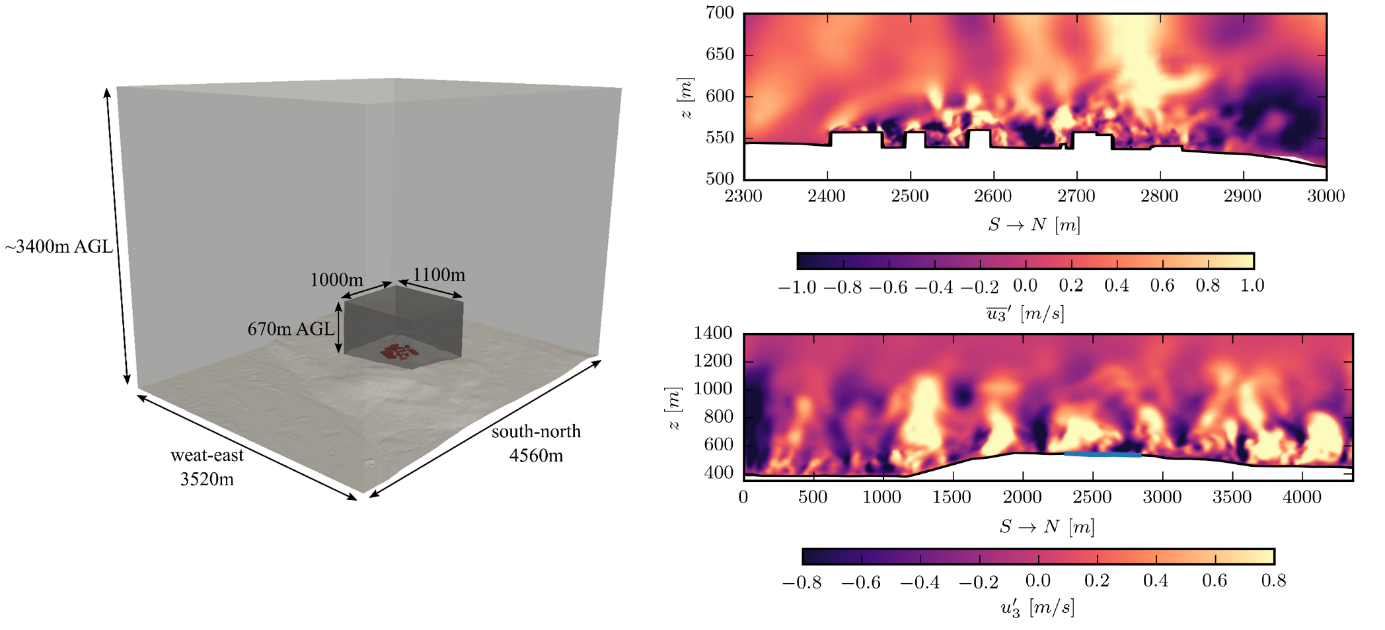Coupling of models
Coupling of urban climate models at different scales
We used a nesting approach to couple large-scale LES simulations of buoyant flows at the city scale with small-scale LES at neighborhood scale. Information of large scale LES is used as boundary conditions for small scale LES at neighborhood scale using a blending zone (Vonlanthen et al. 2016 and Vonlanthen 2015). As a case study, the local climate of ETHZ Hönggerberg Campus in Zurich was studied (Vonlanthen et al. 2017), using two nested domains, where the campus was assumed to be at an elevated temperature. The figures show flow structures at the two studied scales, where large as well as small buoyant flow features are being resolved.
Publications
Vonlanthen M, Allegrini J, Carmeliet J: Assessment of a One-way Nesting Procedure for Obstacle Resolved Large Eddy Simulation of the ABL. Computers and Fluids 140: 136-147, 2016 Vonlanthen M. 2015. Multiscale and turbulent interactions for urban microclimate prediction. PhD thesis, ETH Zürich.
Vonlanthen M, Allegrini J, Carmeliet J: Multiscale Interaction Between a Cluster of Buildings and the ABL Developing Over a Real Terrain. Urban Climate, DOI: 10.1016/j.uclim.2017.02.009, 2017
